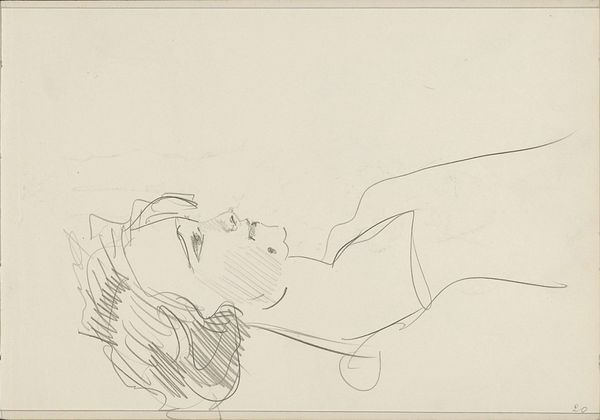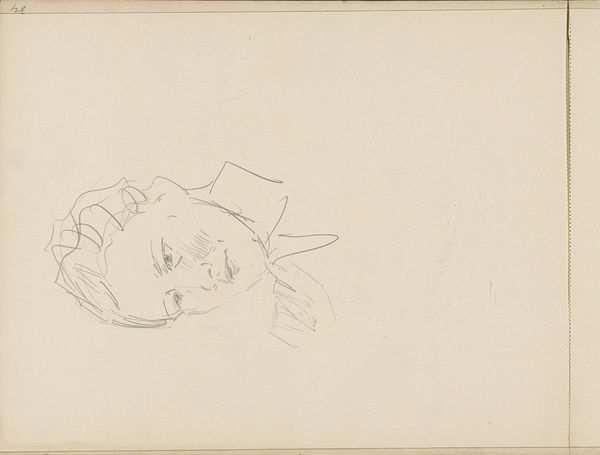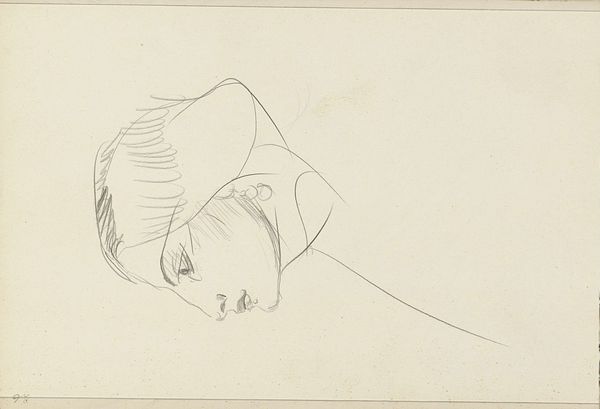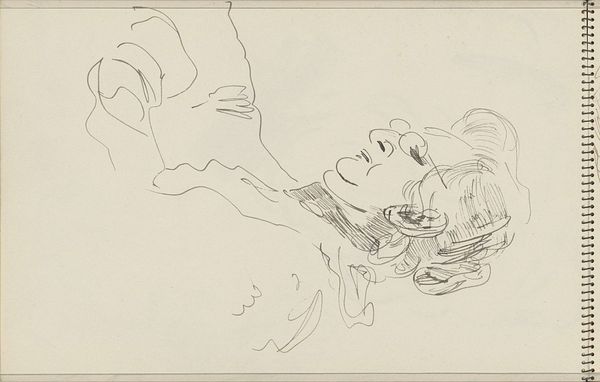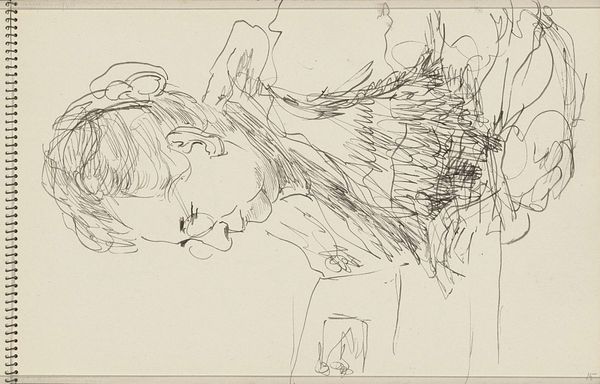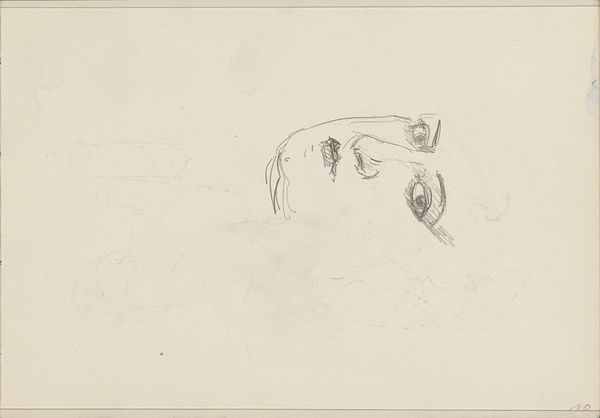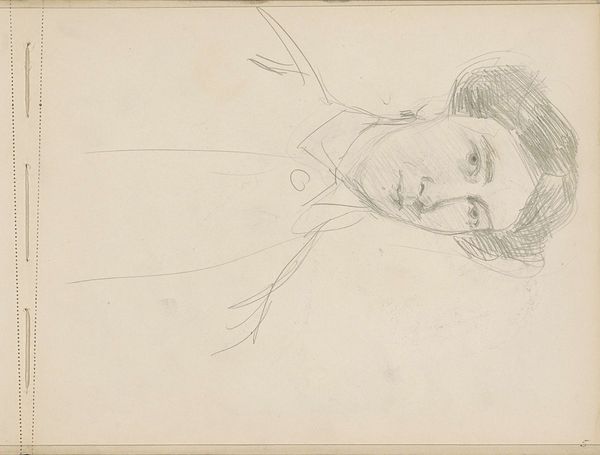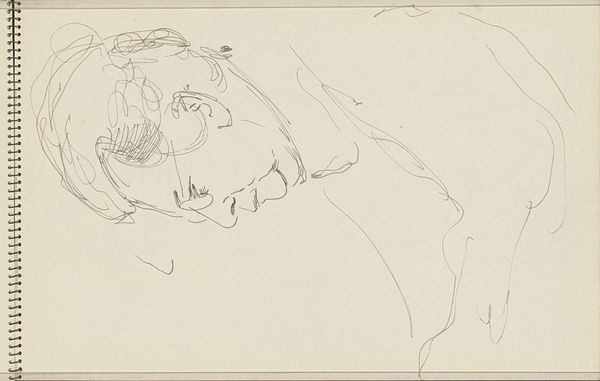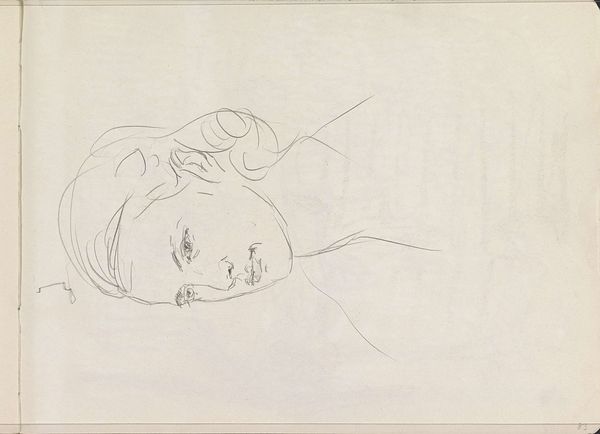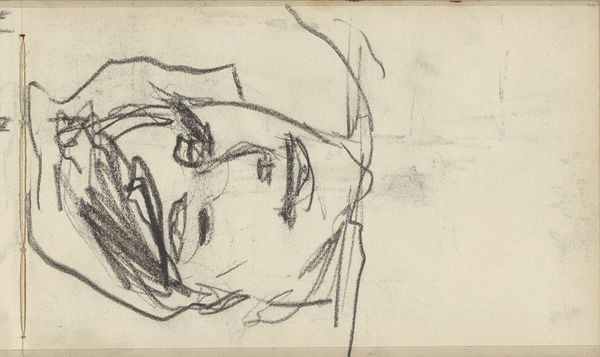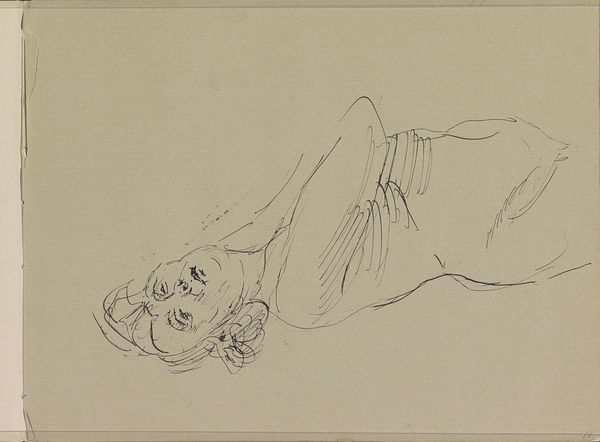
Copyright: Rijks Museum: Open Domain
Editor: So, here we have Isaac Israels's "Vrouwenhoofd," a pencil drawing from around 1915 to 1925, at the Rijksmuseum. It feels very intimate, like a stolen glance. What strikes you most when you look at it? Curator: The unfinished nature of the drawing is interesting. See how the lines seem to search, almost tentatively, for the essence of the subject? It speaks to a process of unveiling, not just the woman's likeness, but also perhaps an emotion or inner state. Does the tilted head remind you of anything? Editor: Now that you mention it, the tilt does bring to mind images of the Virgin Mary, but here, without the religious context... is there still some echo of that symbolic vulnerability or piety? Curator: Precisely. Artists often tap into a reservoir of pre-existing imagery. Think of the pre-Raphaelites' use of medieval symbolism or consider classical ideals of feminine beauty throughout different eras. By consciously or unconsciously alluding to those familiar archetypes, they imbue their work with layers of meaning that resonate on a deeper, almost subconscious level. This drawing is an exploration through those established symbols and the expression of modernity in form and aesthetics. What do you think it suggests in terms of how our ideas about the ideal woman may have been shifting? Editor: That's fascinating. It highlights the way art carries cultural memory, and this simple sketch seems to question or perhaps even soften those long-standing ideals of feminine representation. Thanks. It’s given me so much to think about! Curator: Indeed! And these sketches offer a different intimacy – a chance to witness how our preconceptions meet a modern gaze.
Comments
No comments
Be the first to comment and join the conversation on the ultimate creative platform.
